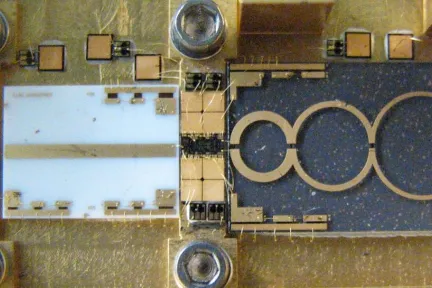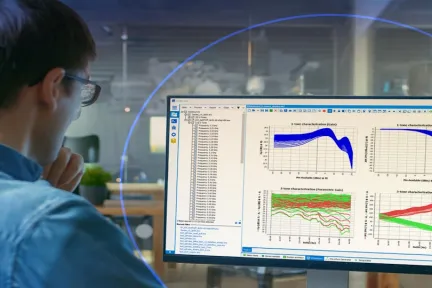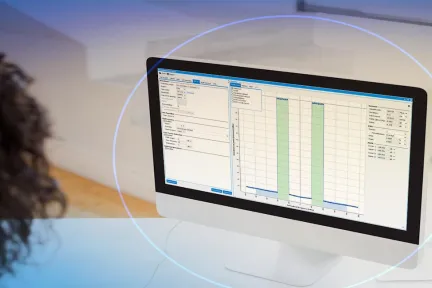IVCAD Suite Modeling
Extract transistor models for circuit simulation and circuit models for system simulation
Convert Measurement Data into Accurate Models
Generating data that can be relied upon with absolute confidence is a cornerstone of IVCAD's offering. Transforming this measurement data into an equivalent model for accurate simulation work makes it even more valuable. IVCAD Suite Modeling offers the use of synchronized pulsed current/voltage and S-parameter measurements to create nonlinear transistor models for designing integrated RF circuits. These models can be implemented in commercial circuit simulators widely used in the industry and validated by comparing measurement results with load-pull simulations.
IVCAD Modeling also allows for the conversion of measurements made on RF circuits such as power amplifiers into equivalent behavioral models, integrating numerous complex phenomena such as nonlinear behavior or memory effects.
IVCAD Suite Modeling - IVM
- Extract Transistor Models for Circuit Simulation
- Extract Circuit Models For System Simulation
1. Use IVCAD for Transistor Compact Model Extraction
A compact transistor model is an equivalent representation of different elements that describes the physical phenomena occurring in the component to accurately simulate the linear and nonlinear behavior of the component.
Unlike a pure black box mathematical model, a compact model is inspired by the physical phenomena of semiconductors through an equivalent diagram composed of linear elements (resistors, capacitors, inductors) and non-linear elements (current sources, diodes, capacitors), represented using mathematical equations in order to mimic the behavior of the transistor.
The main objective of such a model is to capture the main physical phenomena and characteristics with a minimum of parameters to facilitate its integration and limit convergence problems in circuit simulations.
The model must address several key points, such as highlighting DC current and voltage dependencies, nonlinear behavior, and thermal effects. IVCAD (IVM) offers a user-friendly software interface and a specific equation editor that allows to create custom models for each nonlinearities for HEMT/pHEMT device (like GaN, GaAs…) to simulate the DC performance of the component. In a same manner, an efficient compact modeling flow has been developed for LDMOS transistors, with different
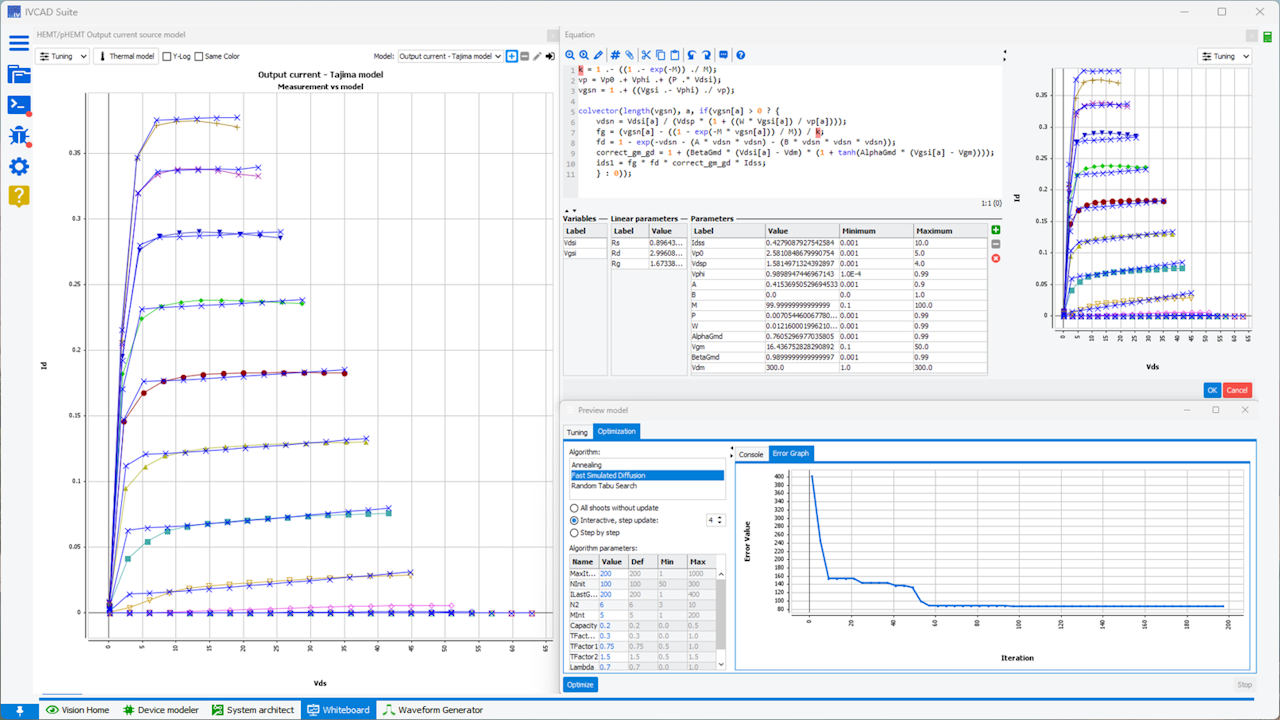
2. Highlight Thermal Dependencies
Once the model is able to fit the pulse Voltage & Current characteristics, it is essential to upgrade this one with a thermal circuit that represents its dynamic self-heating behavior.
In RF transistors, the dissipated power depends on the operating conditions (e.g., bias point, signal power, frequency). This power causes a rise in junction temperature. For high-signal (high-power) operation, the power dissipation is usually calculated from the dynamic characteristics of the device.
This self-heating is particularly important when considering the impact of thermal effects on performance at higher power levels. For small signals, power dissipation is typically related to the quiescent current (IDQ) and operating voltage (VDQ). For large signals, the instantaneous power dissipation depends on the input signal, requiring timing analysis or integration of the device power over the signal period.
IVCAD (IVM) offers a turnkey solution for modeling thermal phenomena for each of the model’s parameters in order to introduce a dynamic temperature dependence.
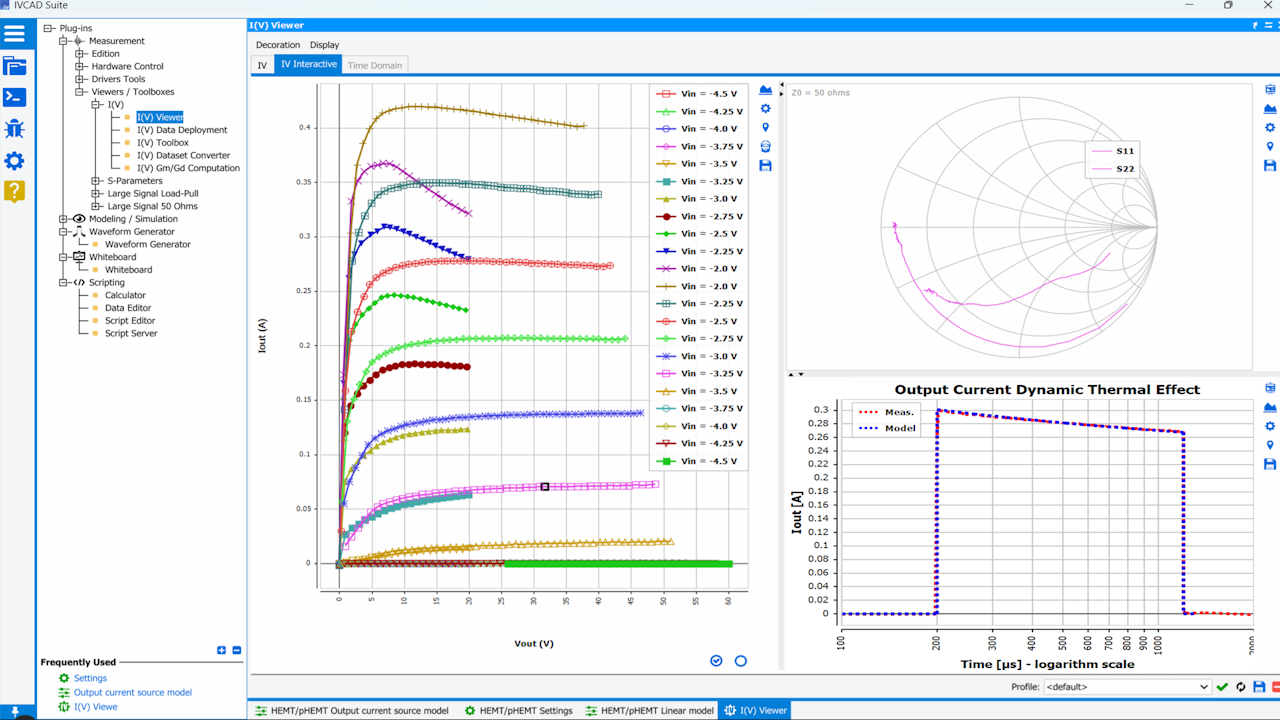
3. Implement Trapping Effect Memories in GaN Technologies
Trapping effects in GaN (Gallium Nitride) transistors, especially in high-power and high-frequency applications, can significantly affect the transistor's performance. These effects occur due to the trapping and de-trapping of charge carriers in the semiconductor material or at the interface between different layers in the device.
Trapping can lead to issues like dynamic threshold voltage shifts, transient effects, and degraded switching behavior, all of which are critical for accurate RF transistor modeling. To extract a GaN transistor model that accounts for trapping effects, you need to carefully characterize the device using time-dependent measurements and incorporate these effects into your compact model.
These parasitic phenomena is revealed by Pulsed I-V measurements which isolate the dynamic response and transient recovery from trapped charges from thermal effects. Indeed, since trapping effects are often temperature-dependent, measuring the device's performance at different temperatures is mandatory.
IVCAD (IVM) has been developed to model the different time constants for trap capture and emission of electrons at different energy levels to predict the threshold voltage shifts and transconductance degradation.
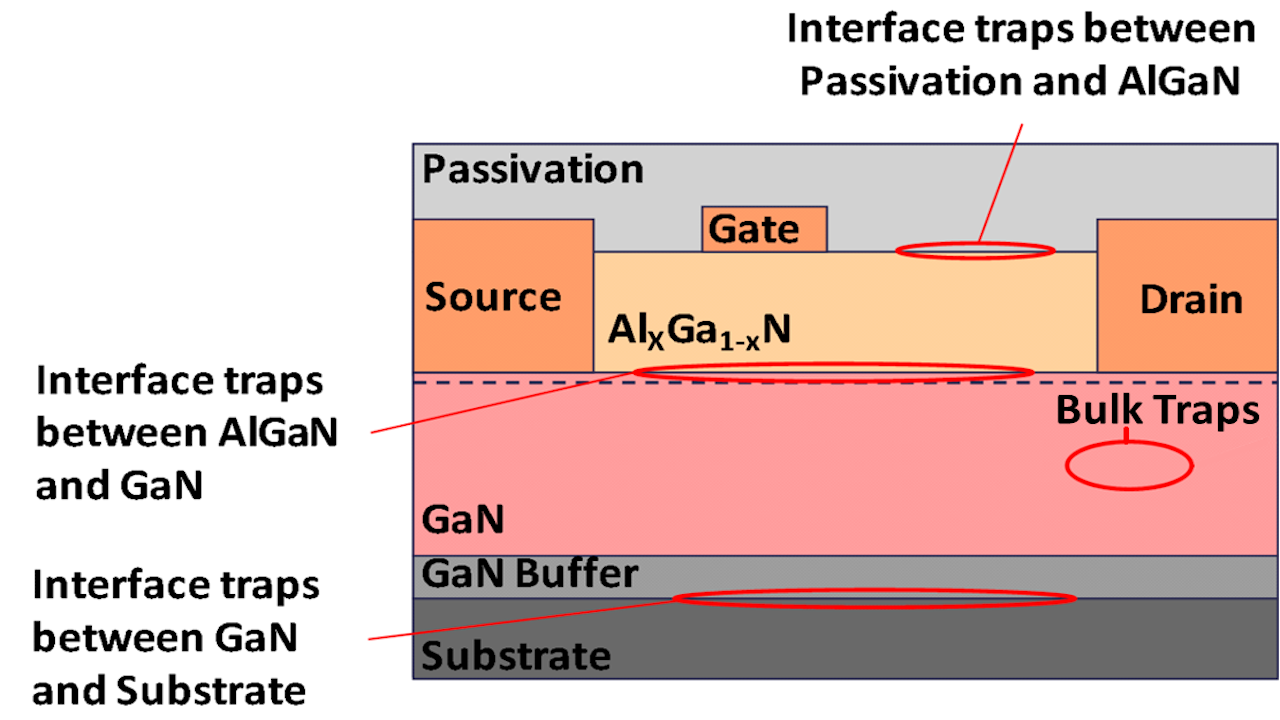
4. Fit the Nonlinear RF Behavior in Load Pull Conditions
Once the current source model is developed, other elements of the model such as nonlinear capacitances and diodes must be extracted to simulate the actual behavior of the component under different operating conditions as a function of temperature, frequencies, bias voltages, and source and load impedances.
The compact model must account for the variation of output power and efficiency as a function of load impedance, as this is the core of load-pull simulations for a reliable circuit design process based on this model.
To achieve an accurate fit to nonlinear load-pull measurements in a compact transistor model, several key model elements must be carefully addressed. The model must capture the nonlinearities due to these high-power signal conditions.
IVCAD (IVM) allows optimization of multiple model parameters to fit load pull data without degrading IV and S parameter simulations by refining the current source model, nonlinear capacitances, memory plus thermal effects, and bias-dependent parameters.
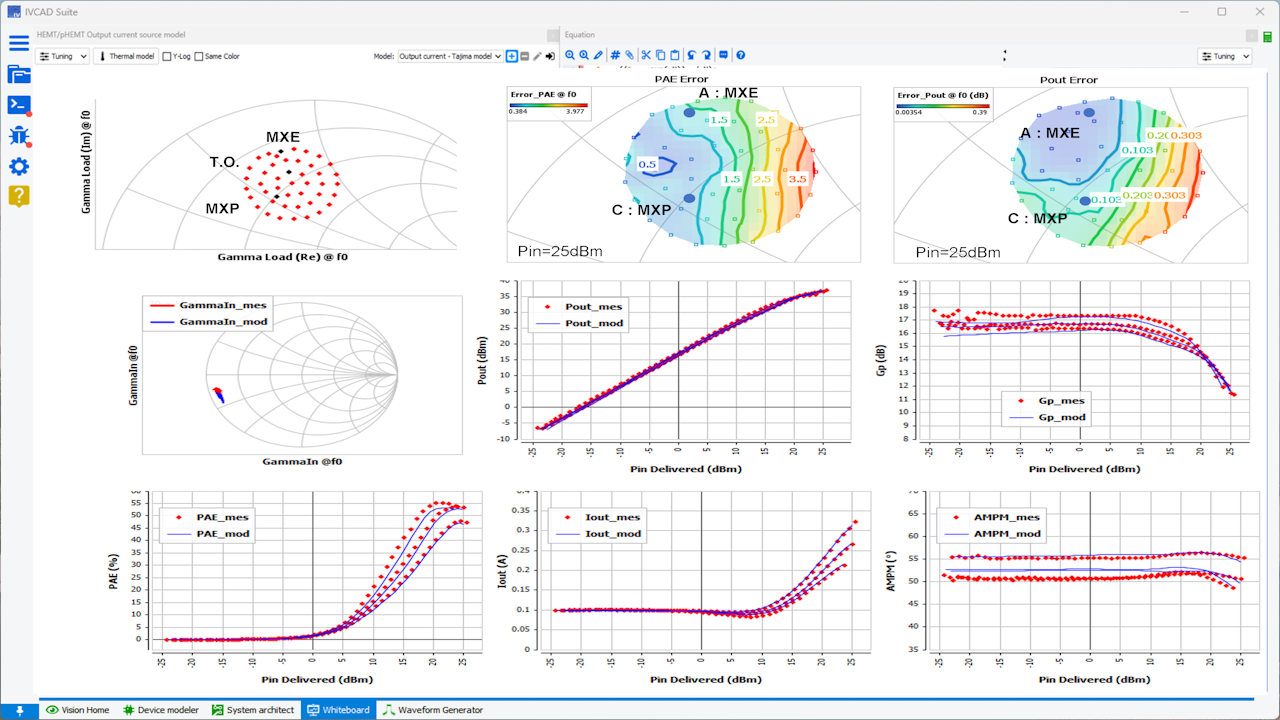
5. Export IVCAD Transistor Model in RF Circuit Simulators
IVCAD (IVM) does enable the export of transistor compact models to third-party circuit simulators.
While IVCAD provides a set of tools to extract, calibrate, and refine compact models for these GaN, GaAs and LDMOS devices, such models can be exported to various third-party circuit simulators. The software enables the export of transistor compact models to third-party circuit simulators.
File Formats: IVCAD (IVM) usually exports models in common formats such as Netlists that can be read by most circuit simulators. This export process allows seamless integration of the generated transistor model into a broader simulation environment where the performance of the transistor can be analyzed in larger circuit contexts.
Interfacing: IVCAD (IVM) software has direct support for integration with these simulators and provides specific tools for the correct setup of the exported models, such as ensuring that model parameters and component connections are properly mapped to the third-party simulation environment.
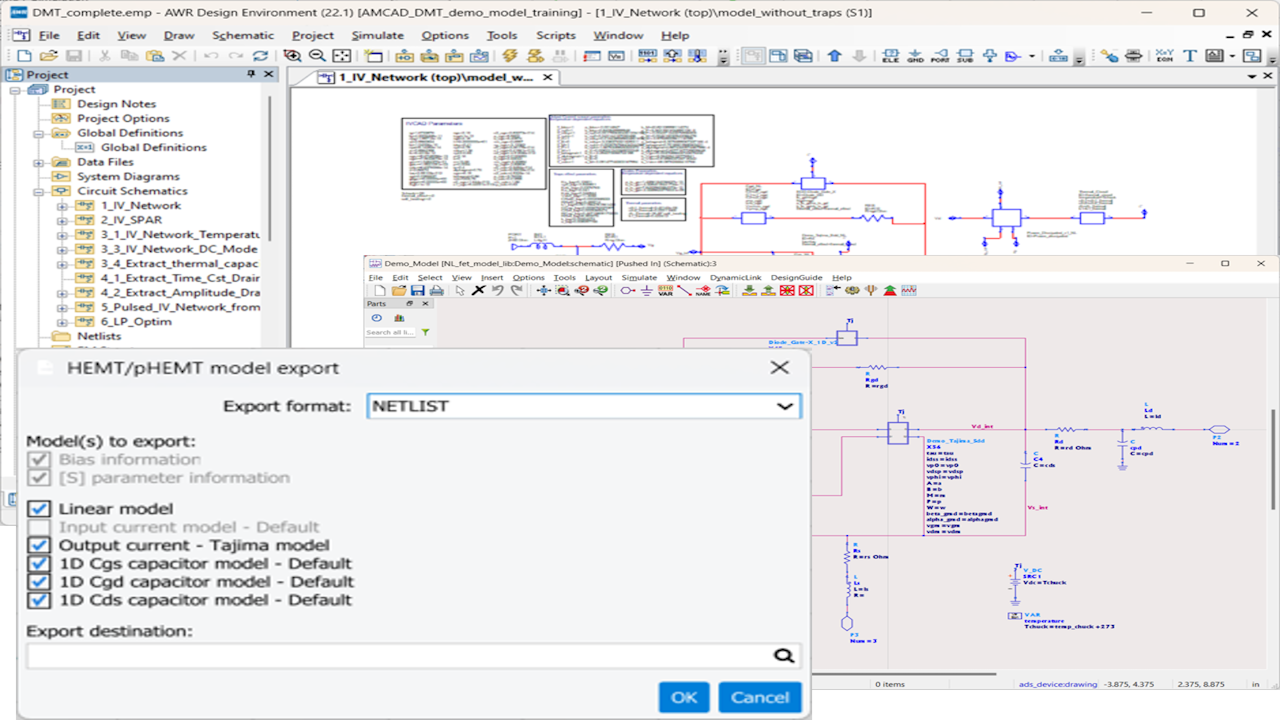
6. Create a Behavioral Transistor Model Just Using Load Pull Data
Extracting a transistor model generally requires skills, time, and various types of measurements, which can make this process unaffordable when the time and budget of the amplifier design team's are limited. Behavioral models are useful in several applications : to hide the details of the transistor specifics while concentrating on its performance and response, to improve the speed of simulation or to model a packaged component.
IVCAD Suite Modeling permits to use large signal data provided by the IVCAD Measurement Suite Specialized (IVZ) to extract a transistor model from these measurements that can reproduce the transistor behavior during a Harmonic Balance simulation. Models can allow interpolation or extrapolation of the transistor performance for different matching conditions and various harmonic load impedances.
This model can be parametric, meaning it can be extracted for different bias, temperatures and frequencies, to cover the operating conditions required for simplified design of the final circuit.
The main objective of such a model is to capture the main physical phenomena and characteristics with a minimum of parameters to facilitate its integration and limit convergence problems in circuit simulations.
The model must address several key points, such as highlighting DC current and voltage dependencies, nonlinear behavior, and thermal effects. IVCAD (IVM) offers a user-friendly software interface and a specific equation editor that allows to create custom models for each nonlinearities for HEMT/pHEMT device (like GaN, GaAs…) to simulate the DC performance of the component. In a same manner, an efficient compact modeling flow has been developed for LDMOS transistors, with different capacitance models available (hyperbolic tangent, gaussian..).
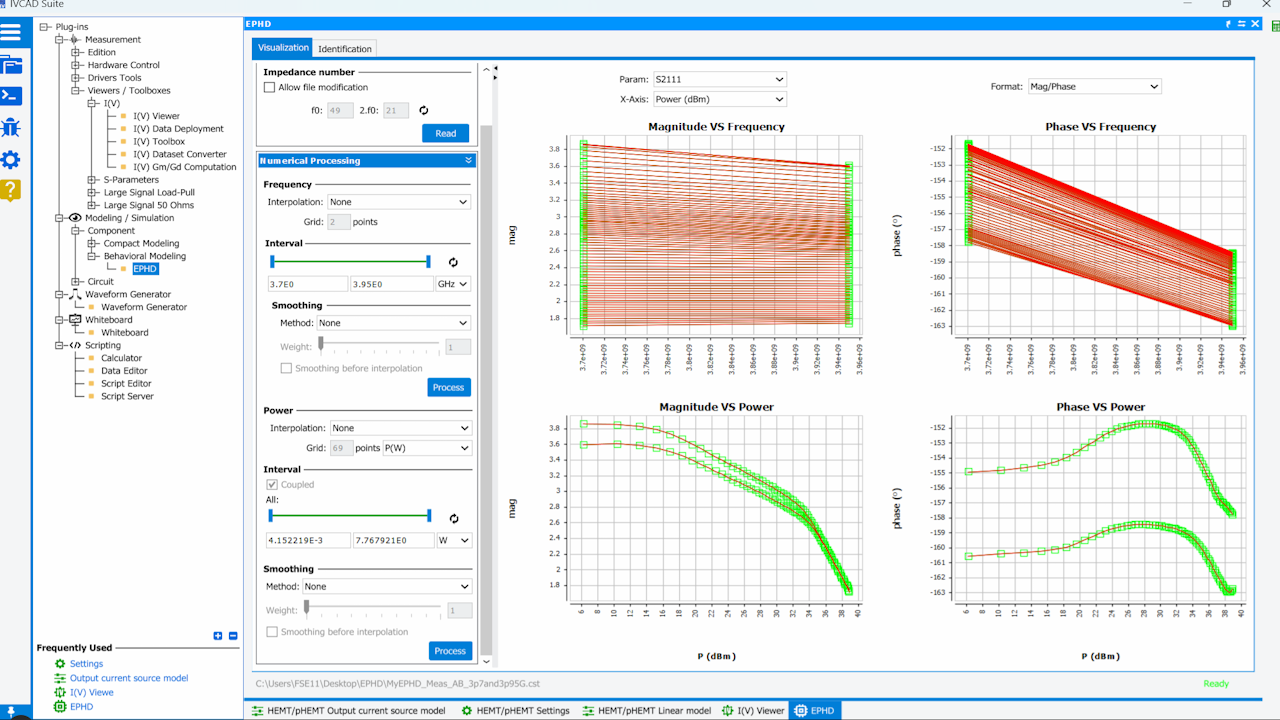
1. Turn Your RF Circuit Design into an Equivalent Behavioral Model
Turning an RF (Radio Frequency) circuit design into an equivalent behavioral model aims to simplify system-level simulation, abstracting away complex details and significantly speeding up simulations when complex modulated signals require time-domain analysis.
Alternatively, reference data for behavioral modeling can be provided by a test bench controlled by IVCAD Suite Measurement if the objective is to model an off-the-shelf circuit.
With such a behavioral model, you can quickly explore different design scenarios and test the performance of the system under various conditions without needing to re-simulate the entire detailed circuit. This enables faster iterations in the design process.
Behavioral models can help in optimizing system performance, for instance, the model can be used to identify bottlenecks or inefficiencies in the overall system and then focus on improving those areas with digital processing such as Digital Predistortion.
Using IVCAD (IVM), it is thus possible to significantly reduce the number of iterations in the V-cycle between the circuit supplier and the system engineers, in order to optimize performance not at the circuit level alone, but at the level of the system in which it will be integrated.
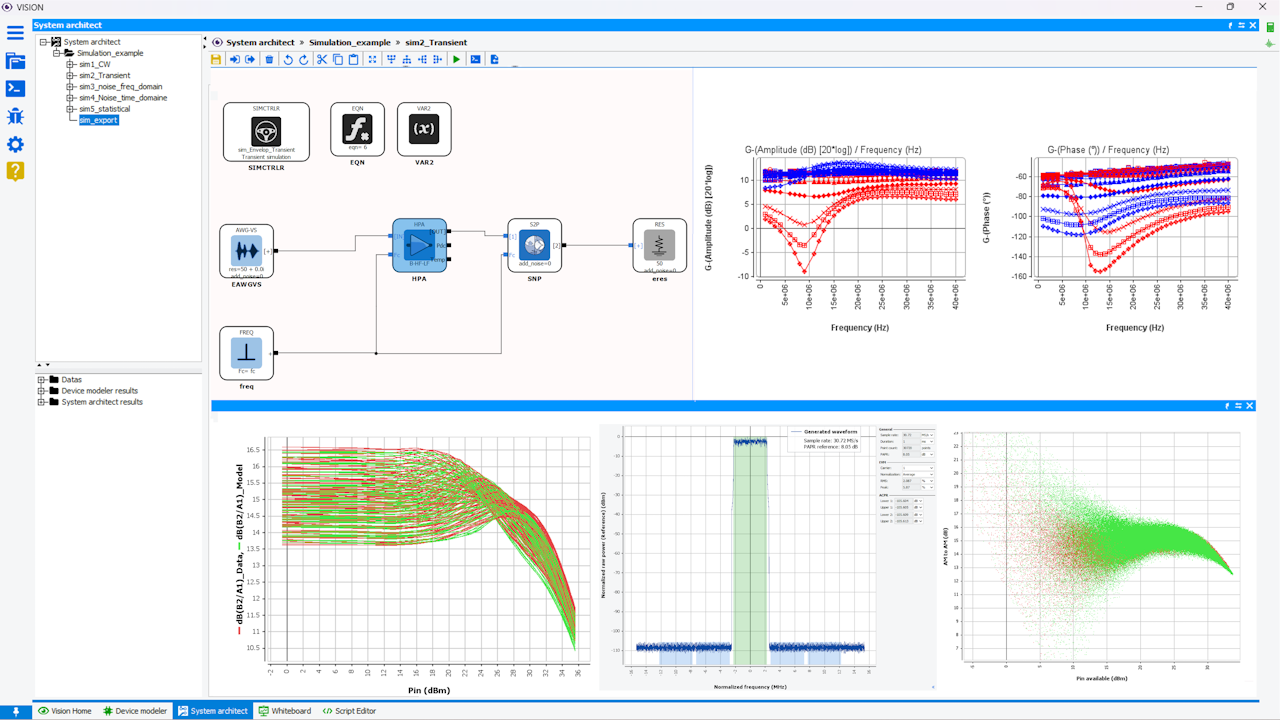
2. Create a Nonlinear Model that Embeds High-Frequency Memory Effects
The AM-AM and AM-PM curves represent the amplitude and phase modulation characteristics. This nonlinear behavior is also identifiable in other characteristics such as DC consumption and added power efficiency.
This nonlinearity depends on the carrier frequency value. Since a modulated signal is composed of multiple instantaneous carriers delivered simultaneously within the signal bandwidth, it is important that the circuit model reproduces the interactions between these different radio frequencies, caused, for example, by the transistor gain response or the topology of the matching circuit as a function of the frequency, which can impact the spectral response at the output of a power amplifier.
IVCAD Suite Modeling (IVM) provides circuit behavioral models accounting for high-frequency memory effects extracted from one-tone AM-AM and AM-PM data within the circuit's operational frequency band to simulate the distortion of a modulated signal caused by the circuit's in-band nonlinear frequency response, also known as high-frequency memory effects.
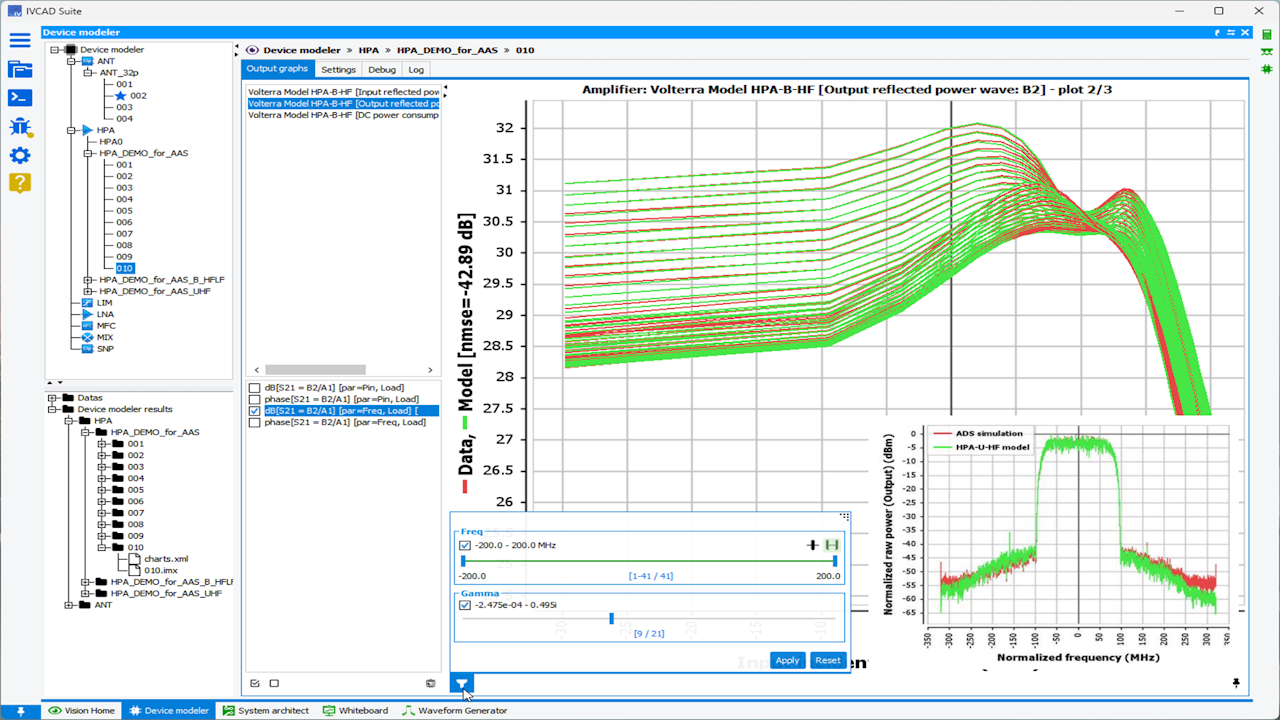
3. Create a Nonlinear Model that Embeds Low-Frequency memory effects
The integration of short-term memory phenomena into circuit models makes it possible to represent the impact of rapid variation of signal carrier frequencies. However, in many cases this is not sufficient and the model must be improved by also integrating low-frequency memories, activated by the slower variation of the signal envelope in the time domain.
If these different memory lengths, and their possible interactions, are not properly taken into account, the simulation of key figures of merit will be questionable if modulated signals are used. This concerns dynamic AM-AM and AM-PM simulations, spectrum, or the IQ signal constellation.
Based on the data provided by IVCAD Suite measurement specialized (IVZ) or circuit simulations, IVCAD Suite Modeling (IVM) allows the creation of behavioral models that integrate both high and low frequency memories which take place into radio frequency circuits, such as power amplifiers.
It is then possible to confidently simulate critical phenomena, such as the impact of the matching circuit design on the IQ signal constellation, or the realistic response of the circuit when this one is linearized using digital predistortion techniques (DPD).
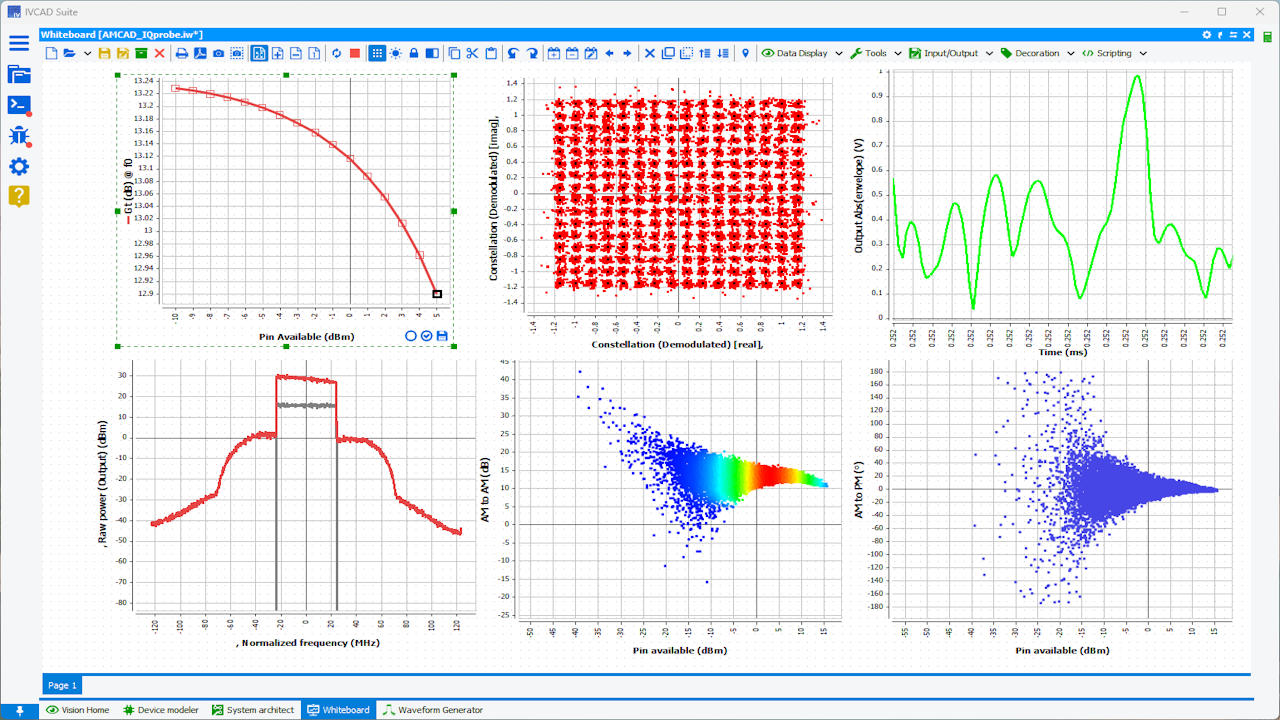
4. Model the Circuit Behavior for a Modulated Signal under Load Pull Conditions
Unfortunately, Radio Frequency circuits rarely operate under ideal conditions, perfectly matched to one another.
Indeed, when multiple circuits are cascaded, impedance mismatch between circuits creates signal reflections that degrade signal quality.
Parametric models exist, they can represent the impact of mismatching when varying an ideal load, but IVCAD Suite Modeling is the benchmark solution capable of providing circuit models that take into account the true impedance profile as a function of frequency and are capable of operating bilaterally in nonlinear regimes.
Indeed, the impact of mismatching can disrupt the entire system performance, not just the behavior of the mismatched circuit.
IVCAD Modeling is a unique solution, as each circuit model integrates its own equation solver, allowing for complex, accurate, and fast simulations.
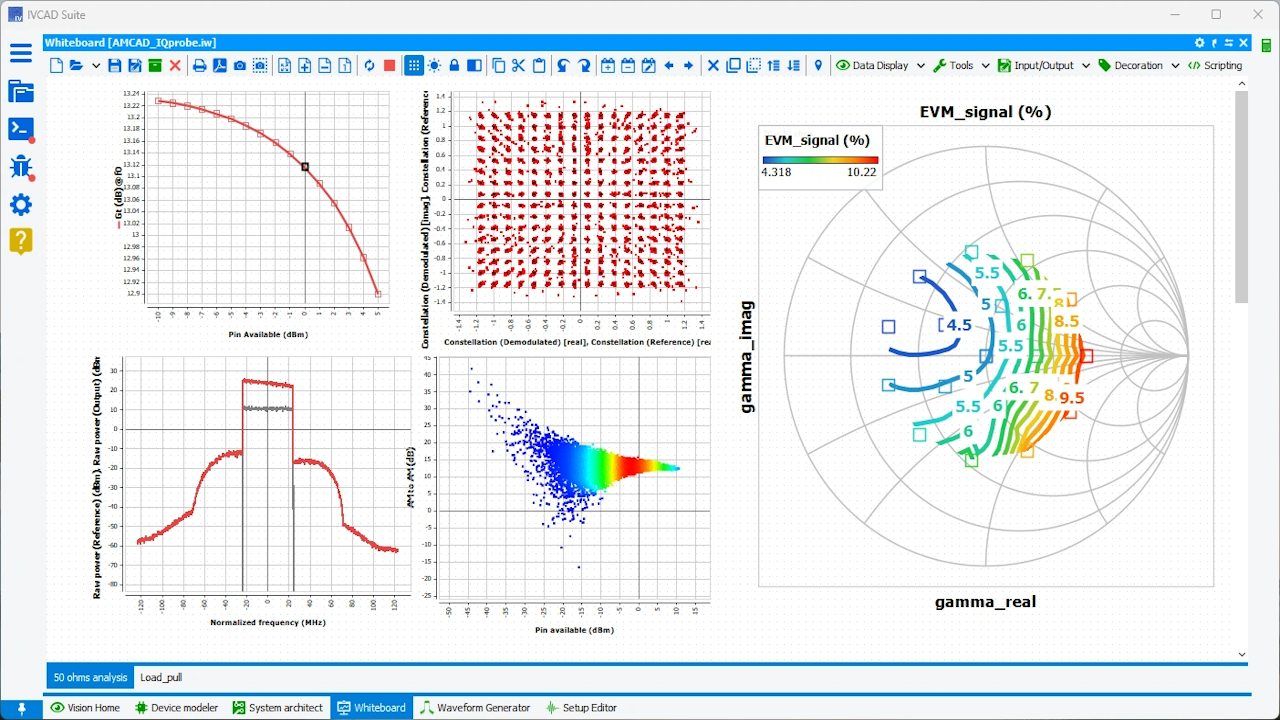
5. Extract Models for Various Type of Circuits
The IVCAD SUITE Modeling allows the extraction of various circuit types, such as:
- Limiter models used to simulate system overpower protection;
- Mixer models used to transpose frequencies in the uplink and downlink bandwidths;
- Low-noise amplifier models used to simulate the circuit's impact on noise figure criteria;
- High-power amplifier models used to analyze signal distortion under nonlinear conditions;
- Multifunction chip models that can be parameterized for different conditions, such as a tunable filters, step attenuators, phase shifters, or any other parametric circuits;
- Antenna models that can be composed into an SnP file to represent the coupling effects of the antenna elements and the associated far-field data provided by CST Studio Suite.

Also Discover
Learn What SIMULIA Can Do for You
Speak with a SIMULIA expert to learn how our solutions enable seamless collaboration and sustainable innovation at organizations of every size.
Get Started
Courses and classes are available for students, academia, professionals and companies. Find the right SIMULIA training for you.
Get Help
Find information on software & hardware certification, software downloads, user documentation, support contact and services offering

